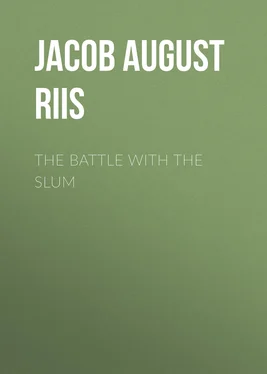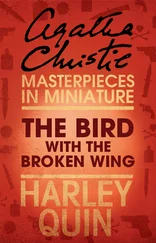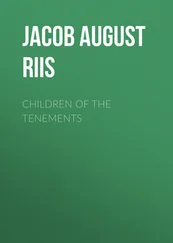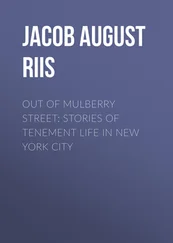Jacob August Riis - The Battle with the Slum
Здесь есть возможность читать онлайн «Jacob August Riis - The Battle with the Slum» — ознакомительный отрывок электронной книги совершенно бесплатно, а после прочтения отрывка купить полную версию. В некоторых случаях можно слушать аудио, скачать через торрент в формате fb2 и присутствует краткое содержание. Жанр: foreign_prose, sociology_book, foreign_antique, на английском языке. Описание произведения, (предисловие) а так же отзывы посетителей доступны на портале библиотеки ЛибКат.
- Название:The Battle with the Slum
- Автор:
- Жанр:
- Год:неизвестен
- ISBN:нет данных
- Рейтинг книги:3 / 5. Голосов: 1
-
Избранное:Добавить в избранное
- Отзывы:
-
Ваша оценка:
- 60
- 1
- 2
- 3
- 4
- 5
The Battle with the Slum: краткое содержание, описание и аннотация
Предлагаем к чтению аннотацию, описание, краткое содержание или предисловие (зависит от того, что написал сам автор книги «The Battle with the Slum»). Если вы не нашли необходимую информацию о книге — напишите в комментариях, мы постараемся отыскать её.
The Battle with the Slum — читать онлайн ознакомительный отрывок
Ниже представлен текст книги, разбитый по страницам. Система сохранения места последней прочитанной страницы, позволяет с удобством читать онлайн бесплатно книгу «The Battle with the Slum», без необходимости каждый раз заново искать на чём Вы остановились. Поставьте закладку, и сможете в любой момент перейти на страницу, на которой закончили чтение.
Интервал:
Закладка:
We had not yet taken a lesson from Nero. That came later. But otherwise we were abreast. No doubt the Roman landlord, like his New York brother of a later day, when called to account, "urged the filthy habits of his tenants as an excuse for the condition of the property." It has been the landlord's plea in every age. "They utterly forgot," observes the sanitarian who was set to clean up, "that it was the tolerance of those habits which was the real evil, and that for this they themselves were alone responsible." 6 6 York Health Department Report, 1866, Appendix A, p. 6.
Those days came vividly back to me last winter, when in a Wisconsin country town I was rehearsing the story of the long fight, and pointing out its meaning to us all. In the audience sat a sturdy, white-haired, old farmer who followed the recital with keen interest, losing no word. When he saw this picture of one of the Five Points, he spoke out loud: "Yes! that is right. I was there." It turned out that he and his sister had borne a hand in the attack upon that stronghold of the slum by the forces of decency, in 1849 and 1850, which ended in the wiping out of the city's worst disgrace. It was the first pitched battle in the fight. Soon after he had come west and taken homestead land; but the daily repetition during a lifetime of the message to men, which the woods and the fields and God's open sky have in keeping, had not dulled his ears to it, and after fifty years his interest in his brothers in the great city was as keen as ever, his sympathies as quick. He had driven twenty miles across the frozen prairie to hear my story. It is his kind who win such battles, and a few of them go a long way.

The "Old Church" Tenement.
A handful of Methodist women made the Five Points decent. To understand what that meant, look at the "dens of death" in Baxter Street, which were part of it, "houses," says the health inspector, 7 7 Report of Board of Health, New York, 1869, p. 346.
"into which the sunlight never enters … that are dark, damp, and dismal throughout all the days of the year, and for which it is no exaggeration to say that the money paid to the owners as rent is literally the 'price of blood.'" It took us twenty-four years after that to register the conviction in the form of law that that was good cause for the destruction of a tenement in cold blood; but we got rid of some at that time in a fit of anger. The mortality officially registered in those "dens of death" was 17.5 per cent of their population. We think now that the death-rate of New York is yet too high at 19 or 20 in a thousand of the living.
A dozen steps away in Mulberry Street, called "Death's Thoroughfare" in the same report, were the "Old Church Tenements," part of the Five Points and nearly the worst part. "One of the largest contributors to the hospitals," this repulsive pile had seen the day when men and women sat under its roof and worshipped God. When the congregation grew rich, it handed over its house to the devil and moved up-town. That is not putting it too strong. Counting in the front tenements that shut out what little air and sunshine might otherwise have reached the wretched tenants, it had a population of 360 according to the record, and a mortality of 75 per thousand!
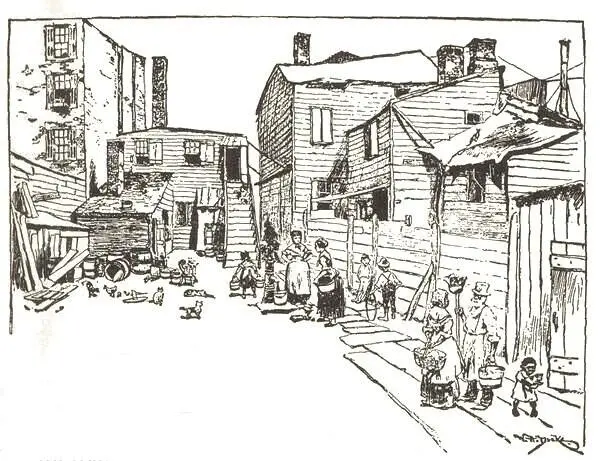
An Old Wooster Street Court.
The sketches of the Fourth Ward and Wooster Street barracks are reproduced from an old report of the Association for Improving the Condition of the Poor. They rightly made out, those early missionaries, that the improvement must begin with the people's homes, or not at all, and allowed no indifference on the part of the public to turn them from their path. It is worth the while of Chicago and the other Western cities that are growing with such joyful metropolitan ambitions, to notice that their slums look to-day very much as New York's did then. In fifty years how will it be? "The offspring of municipal neglect" the Assembly Committee of 1857 called our "tenement-house" system. "Forgetfulness of the poor" was the way a citizens' council put it. It comes to the same thing. Whether seen from the point of view of the citizen, the philanthropist, or the Christian, the slum is the poorest investment a city can make, and once made it is not easily unmade. In a Mississippi river town, when pleading for the turning over to the people's use of some vacant land on the river-shore that would make a fine breathing space, I was told that by and by they would consider it. Just now it was too valuable for factory purposes. When the city had grown opulent, in say twenty-five years, they would be willing to hand it over. Fatal delusion! Men do not grow that kind of sense as they grow rich. The land will be always "too valuable." When we in New York were scandalized at last into making a park of the Mulberry Bend, it cost us a million and a half, and it had made the slum a fixture, not to be dislodged. No! the way to fight the slum is to head it off. It is like fighting a fire. Chasing it up is hard and doubtful work; the chances are that you will not overtake it till the house is burned down.
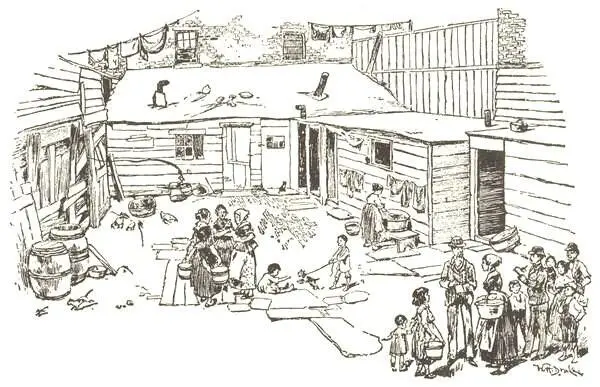
A Fourth Ward Colony in the Bad Old Days.
There were those who thought when the Civil War was over, that a big fire would not be the worst thing that could happen to New York; and, if it could have burned sense into men's minds as it burned up the evidence of their lack of it, they would have been right. But forty per cent—the rent some of the barracks brought—is a powerful damper on sense and conscience, even with the cholera at the door. However, the fear of it gave us the Citizens' Council of Hygiene, and New York heard the truth for once.
"Not only," it ran, "does filth, overcrowding, lack of privacy and domesticity, lack of ventilation and lighting, and absence of supervision and of sanitary regulation still characterize the greater number of the tenements; but they are built to a greater height in stories; there are more rear houses built back to back with other buildings, correspondingly situated on parallel streets; the courts and alleys are more greedily encroached upon and narrowed into unventilated, unlighted, damp, and well-like holes between the many-storied front and rear tenements; and more fever-breeding wynds and culs-de-sac are created as the demand for the humble homes of the laboring poor increases." 8 8 Council of Hygiene's Report, 1866.
The Council, which was composed of sixteen of New York's most distinguished physicians, declared that by ordinary sanitary management the city's death-rate should be reduced thirty per cent. Its judgment has been more than borne out. In the thirty-five years that have passed since, it has in fact been reduced over fifty per cent.
Men and women were found living in cellars deep down under the ground. One or two of those holes are left still in Park Street near the Five Points Mission, but they have not been used as living-rooms for a generation. In cellars near the river the tide rose and fell, compelling the tenants "to keep the children in bed till ebb-tide." The plumber had come upon the field, but his coming brought no relief. His was not a case of conscience. "Untrapped soil pipes opened into every floor and poisoned the tenants."
Where the "dens of death" were in Baxter Street, big barracks crowded out the old shanties. More came every day. I remember the story of those shown in the picture. They had been built only a little while when complaint came to the Board of Health of smells in the houses. A sanitary inspector was sent to find the cause. He followed the smell down in the cellar and, digging there, discovered that the waste pipe was a blind. It had simply been run three feet into the ground and was not connected with the sewer.
Читать дальшеИнтервал:
Закладка:
Похожие книги на «The Battle with the Slum»
Представляем Вашему вниманию похожие книги на «The Battle with the Slum» списком для выбора. Мы отобрали схожую по названию и смыслу литературу в надежде предоставить читателям больше вариантов отыскать новые, интересные, ещё непрочитанные произведения.
Обсуждение, отзывы о книге «The Battle with the Slum» и просто собственные мнения читателей. Оставьте ваши комментарии, напишите, что Вы думаете о произведении, его смысле или главных героях. Укажите что конкретно понравилось, а что нет, и почему Вы так считаете.
